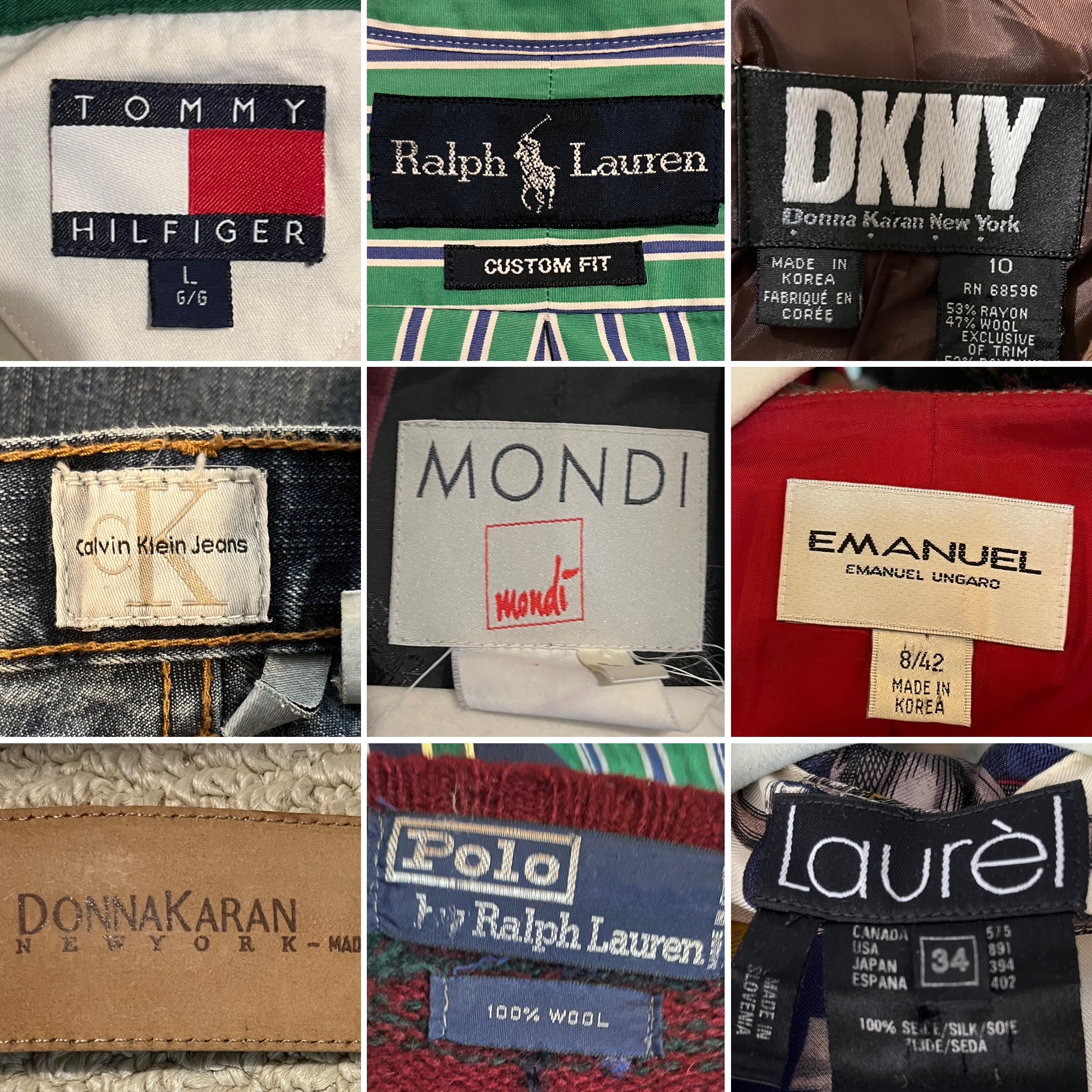Branded Clothing That Lasts: Choosing Fabrics for Longevity
Branded Clothing That Lasts: Choosing Fabrics for Longevity
Blog Article
Understanding Apparel: The Significance of Material Options in Your Closet
The choice of material in garments plays a pivotal role in both visual appeals and performance. Various products use varying levels of resilience, breathability, and convenience, directly influencing the user's experience. Comprehending these subtleties can boost one's closet markedly. Yet, several overlook exactly how these selections can influence not just personal design, however also sustainability. What fabric choices could redefine your wardrobe and straighten it with both design and duty?
The Role of Textile in Fashion and Performance

Typical Fabric Kinds and Their Qualities
When picking garments, comprehending the attributes of usual textile types is important for making informed choices. Cotton, a widely-used all-natural fiber, is understood for its breathability, soft qualities, and versatility, making it appropriate for sportswear and everyday garments. Linen, an additional natural choice, boasts excellent moisture-wicking residential or commercial properties and a distinctive structure, ideal for warm climates.Wool, often favored for its warmth and toughness, varies in excellence; merino woollen is soft versus the skin, while coarser kinds are used for outerwear. Artificial fabrics like polyester and nylon offer longevity and resistance to wrinkles, making them popular for activewear and travel garments. Lastly, blends, which combine synthetic and all-natural fibers, can boost performance while maintaining comfort. By acknowledging these material qualities, individuals can choose apparel that aligns with their way of life and aesthetic preferences.
Breathability and Comfort: Selecting the Right Fabrics for Different Environments
Picking the ideal materials for different climates can substantially boost comfort and overall wearability. Breathable materials are essential in hot environments, as they enable air flow and moisture evaporation. Fabrics such as cotton, linen, and moisture-wicking synthetics effectively attract sweat away from the body, maintaining the user cool and completely dry. Alternatively, in cooler climates, thicker materials like woollen or fleece supply insulation while maintaining breathability, making sure heat without overheating.Additionally, the choice of fabric weight plays an important role; lightweight materials are more effective for summertime, whereas heavier options are fit for winter months wear. Recognizing the one-of-a-kind homes of each material enables individuals to clothe properly for differing climate condition. Inevitably, picking breathable and comfortable materials customized to details environments can greatly enhance day-to-day convenience and boost the total experience of using garments.
Resilience and Treatment: Just How Material Influences Long Life of Your Closet
Choosing the right materials can substantially impact the toughness and treatment requirements of a wardrobe. Fabrics such as cotton and polyester are understood for their strength and simplicity of maintenance, making them suitable for daily wear. On the other hand, delicate products like silk and shoelace need even more cautious handling and specialized cleaning approaches, which can raise the moment and effort required for care. Branded Clothing.Durability is likewise affected by the material's weave and finish; securely woven textiles often tend to withstand wear and tear better than loosely woven choices. Additionally, artificial blends frequently provide enhanced durability, combining the most effective high qualities of several fibers.Understanding the care guidelines for each and every material is crucial, as incorrect washing or drying out can result in early wear. Ultimately, picking sturdy materials can bring about a longer-lasting wardrobe, minimizing the frequency of replacements and adding to an extra sustainable style option
The Influence of Textile on Fit and Shape

Lasting Textile Selections: Making Eco-Friendly Choices
The influence of material extends past fit and silhouette to encompass environmental elements, triggering an expanding passion in lasting fabric options. Green materials, such as natural cotton, hemp, and Tencel, are gaining traction among consumers who focus on sustainability in their closets. These materials are frequently generated with fewer chemicals and water, reducing their eco-friendly footprint.Additionally, recycled materials, made from post-consumer waste, supply an innovative remedy to the textile market's pollution problem. Brands significantly embrace transparency in their sourcing techniques, enabling customers to make educated choices concerning their purchases.Choosing sustainable textiles not just sustains moral practices yet likewise urges the style industry to take on even more accountable production approaches. As understanding of environmental problems rises, individuals are urged to review the lasting influence of their fabric choices, cultivating a movement towards a much more lasting and eco mindful technique to style.
Boosting Design: Exactly How Fabric Can Change an Attire
While numerous might concentrate on shade he has a good point and cut when selecting an outfit, the choice of material plays a crucial function in boosting design and enhancing total look. Various products convey distinctive state of minds and messages; as an example, silk emanates luxury and refinement, while jeans uses an informal, relaxed ambiance. The appearance and drape of a material can drastically change the silhouette, with organized materials offering a sleek look and softer ones creating a much more fluid, kicked back aesthetic.Moreover, the weight of the material influences wearability across periods. Lightweight materials like bed linen and cotton are excellent for summertime, while much heavier materials such as woollen and velour give warmth and style in cooler months. Comprehending textile buildings, such as breathability and stretch, likewise encourages people to make informed selections that enhance convenience without endangering style. Ultimately, the appropriate fabric can change a clothing from regular to extraordinary, making it a vital consideration in any wardrobe.
Regularly Asked Inquiries
Just how Do I Recognize the Textile Web Content of My Clothing?
To identify fabric web content, one can take a look at treatment labels, conduct burn tests for fiber recognition, or consult fabric swatches. These approaches assist differentiate materials, guaranteeing notified selections for clothes treatment and upkeep in daily wear.
Can Textile Choice Affect My Mood or Confidence?
Material choice can greatly influence a person's state published here of mind and self-confidence. Branded Clothing. Specific materials may evoke feelings of convenience or beauty, while others can really feel restrictive or uncomplimentary, inevitably influencing self-perception and emotional well-being throughout the day
What Fabrics Are Ideal for Sensitive Skin?
For individuals with delicate skin, natural textiles like cotton, bed linen, and bamboo are typically suggested. These materials are breathable, hypoallergenic, and less likely to create irritability, making them appropriate selections for convenience and skin health.
How Do I Correctly Wash and Take Care Of Various Fabrics?
To appropriately care and wash for different materials, one need to take into consideration each product's details requirements, consisting of temperature level settings, detergents, and drying approaches, guaranteeing longevity and maintaining the material's original qualities for perfect usage.
Are There Specific Fabrics for Athletic or Performance Wear?
Athletic or performance wear commonly utilizes materials such as polyester, spandex, and nylon. These materials are designed for moisture-wicking, breathability, and adaptability, boosting activity and comfort throughout exercises while offering sturdiness and assistance. Conversely, in colder climates, thicker fabrics like woollen or fleece provide insulation while preserving breathability, making sure warmth without overheating.Additionally, the selection of material weight plays a crucial role; light-weight materials are more effective for summer, whereas larger choices are matched for winter months wear. In contrast, delicate materials like silk and shoelace call for more careful handling and specialized cleansing techniques, which can enhance the time and effort required for care.Durability is additionally affected by the material's weave and finish; snugly woven textiles often tend to withstand wear and tear better than loosely woven alternatives. In contrast, rigid materials can restrict movement yet provide a traditional, sleek look.Moreover, the density and appearance of the fabric can influence the visual assumption of body form. The effect of fabric expands beyond fit and silhouette to incorporate ecological factors, triggering an expanding rate of interest in lasting textile selections. The structure and drape of a material can dramatically modify the silhouette, with organized materials offering a polished appearance and softer ones creating a much more fluid, unwinded aesthetic.Moreover, the weight of the textile affects wearability throughout seasons.
Report this page